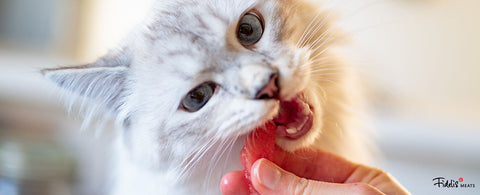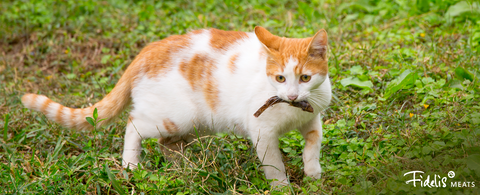|
BARF stands for Biologically Appropriate Raw Food. A BARF dog food diet aims to feed dogs the food they were built to consume in order to improve their overall health, help them live longer, as well as minimise health problems. The BARF diet is a raw dog food diet that consists of a specific ratio of fresh raw meat, edible bones, fruits, and vegetables. Sometimes, herbs, whole grains, nuts, and supplements are added into the mix for a more balanced diet. The recommended ratio is as follows:
You should be feeding your dogs about 2-3% of their body weight daily, split between two meals. It also depends on whether they are underweight, overweight or of a healthy weight, and their daily activity level. Dogs are facultative carnivores that thrive on a carnivorous diet, but they can also survive on diets that are not meat-based. But if you want your dogs to lead a healthier and happier life, you should consider the BARF dog food diet.
Canned food and grain-based kibbles don’t offer the health benefits a raw dog food diet does. They may even lead to serious health complications that could have been avoided if you paid more attention to the things you’re feeding your dogs. Some of the benefits a raw diet brings include improving dental health, stabilising weight, preventing or eliminating digestive problems, increasing energy levels, improving skin and coat condition, eliminating allergies and boosting overall health. How to Introduce BARF Dog Food into your Dog’s Diet
1. Introduce the Diet Slowly Changing your dog's diet to the BARF dog food diet overnight can result in digestive issues. The sudden change in food may also confuse your dogs. Instead, gradually replace items in the dog bowl overtime to accustom them to it. 2. Fast your Dog for Half a Day Fasting your dog for at least half a day ensures a good appetite. You can then observe how your dog reacts to the fresh meat when you feed it. 3. Maintain Usual Feeding Schedule If your dog is on a twice-daily feeding schedule, continue to feed them twice daily. Stick to the feeding routine and don't change it. 4. Monitor your Dog Monitor your dog’s stools daily as you transition them into BARF dog food. Small and solid stools are ideal, but if your dog has loose and soft stools, wait until the stool is firm before continuing the transition. Otherwise, adjust the ingredients accordingly. 5. Consult a Veterinarian The veterinarian can advise you on what’s best for your dog so that you don’t endanger its health. So, before you start changing your dog’s diet, it is a good idea to consult a veterinarian first. Our dogs have shorter and highly acidic digestive tracts that allow them to consume raw meat without a problem. Feeding them the BARF dog food diet will only benefit them and help them stay healthy. Fidelis Meats is a butchery in Singapore dedicated to providing cats and dogs with the best and most natural source of nutrients. Feed your dogs with delicious meats from our range of BARF dog food, free of preservatives, additives, and fillers. |





